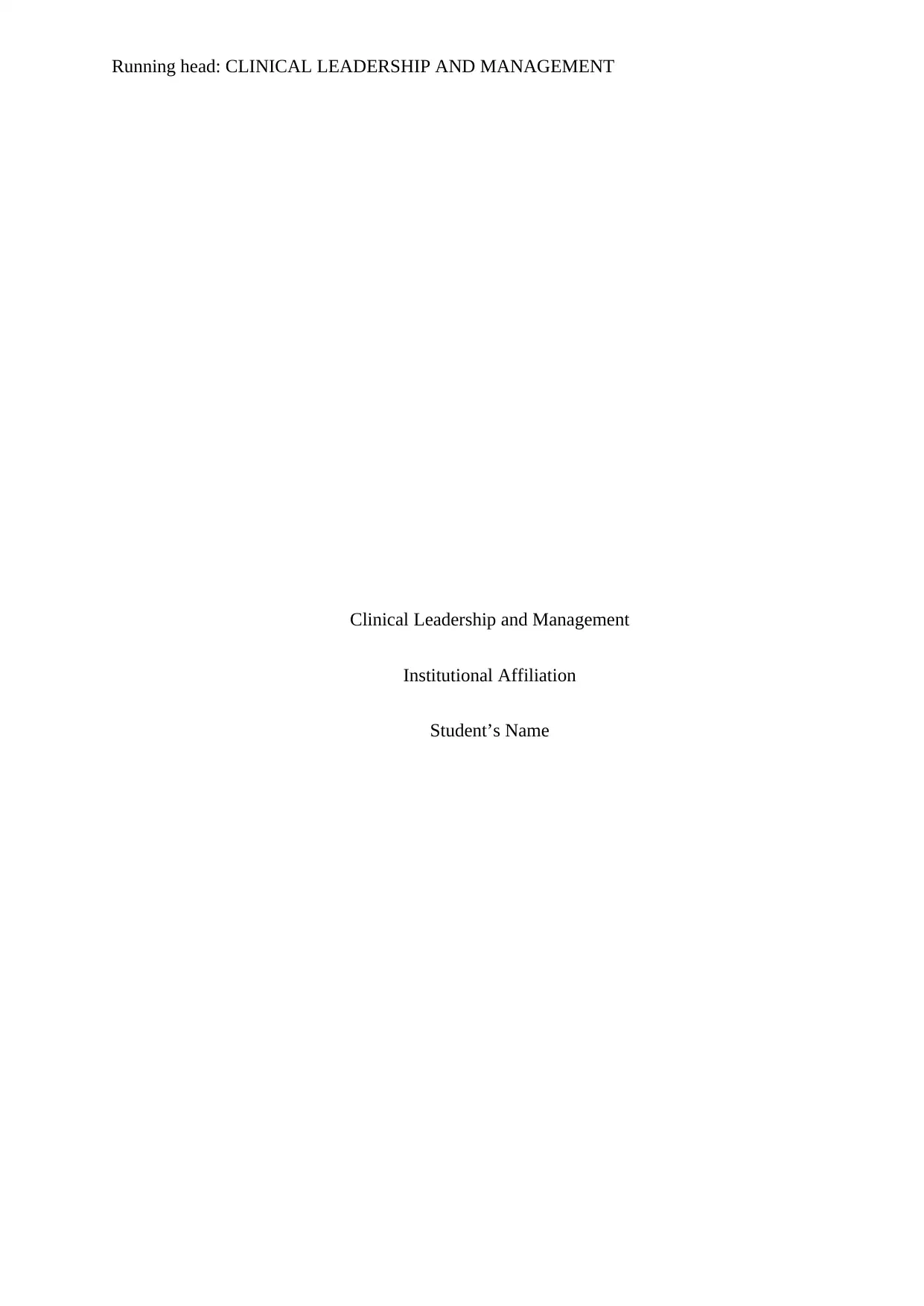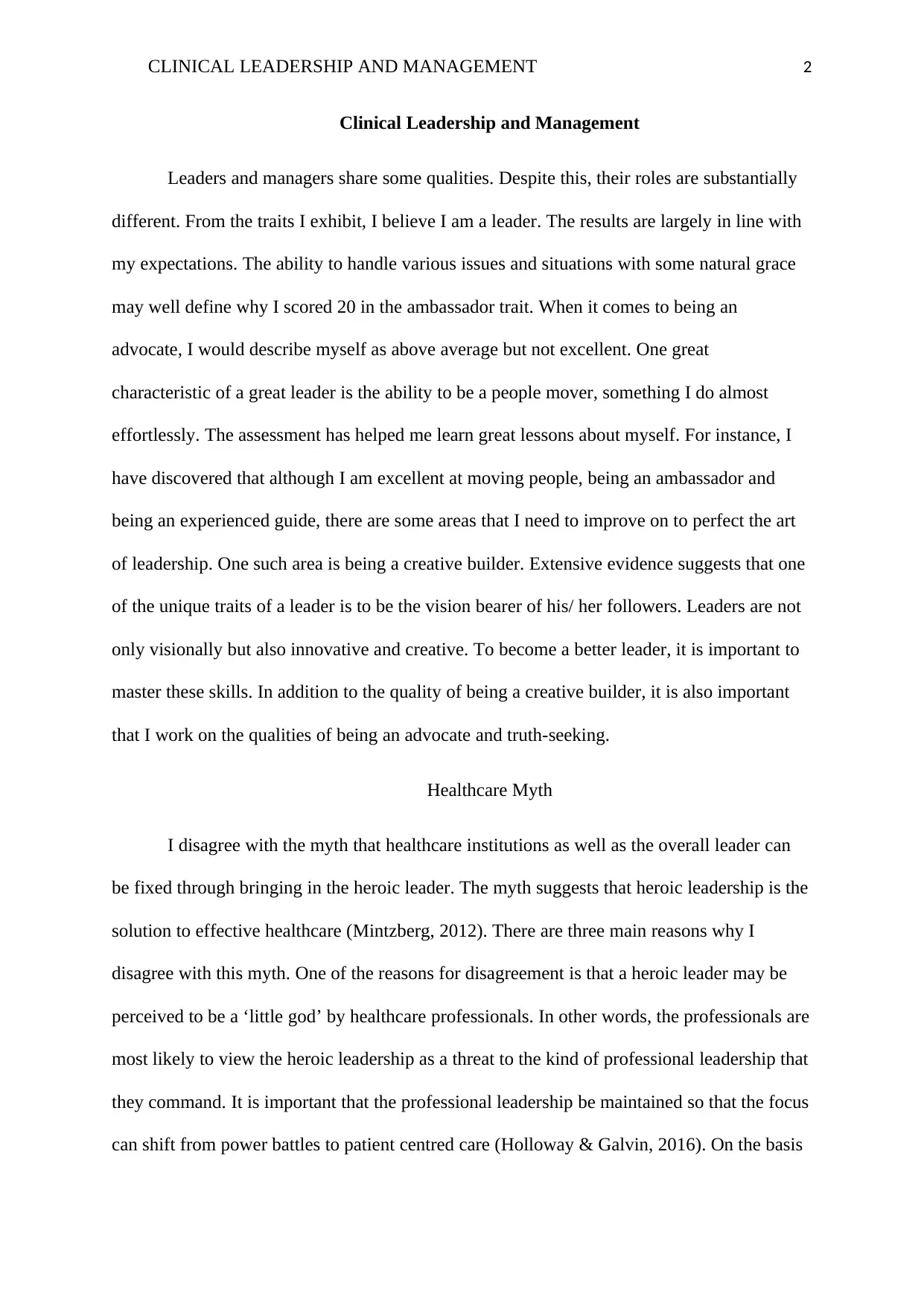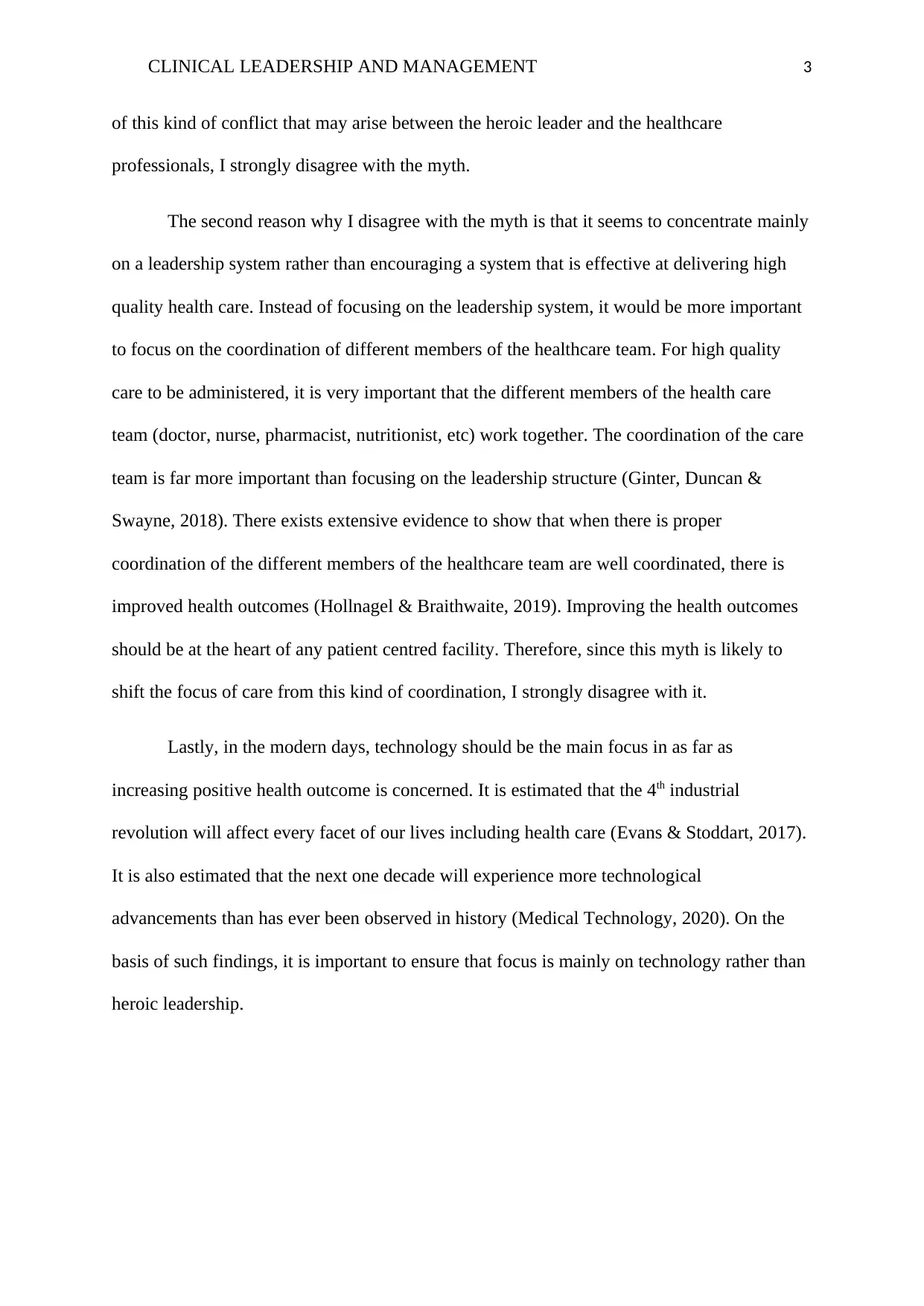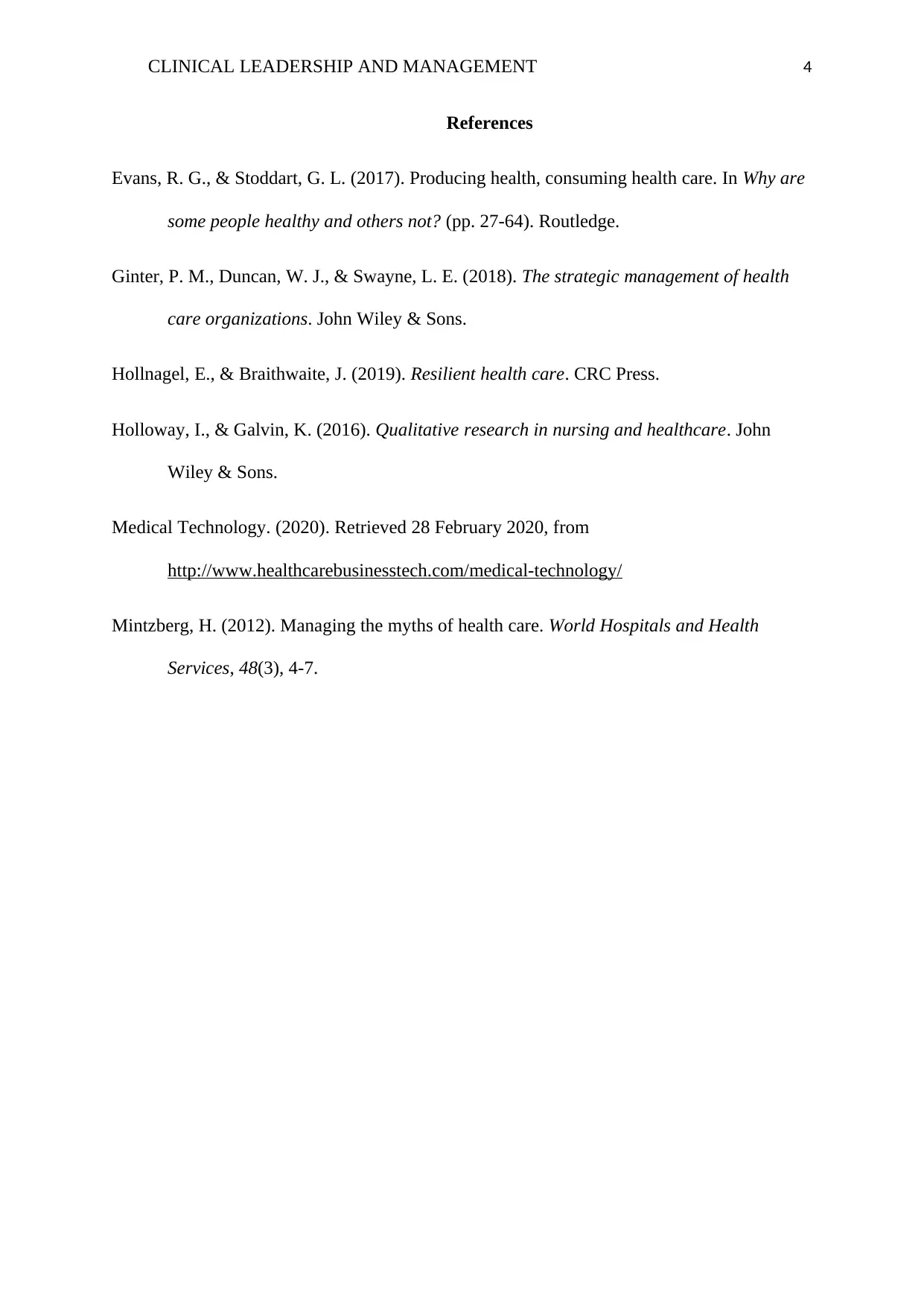Clinical Leadership and Management Report - Assessment Results
VerifiedAdded on 2022/08/13
|4
|891
|23
Report
AI Summary
This report presents an analysis of a student's leadership style assessment, focusing on the results obtained from the assessment and the implications for their leadership approach within a clinical setting. The student's assessment revealed strengths in areas such as ambassadorship, people moving, and experience as a guide, while also identifying areas for improvement, particularly in creative building and truth-seeking. The report then critiques the myth of heroic leadership in healthcare, arguing against the notion that a single, dominant leader can fix healthcare institutions. It provides three key reasons for this disagreement: the potential for conflict with healthcare professionals, the need to focus on system-wide coordination rather than leadership structure, and the importance of technological advancements in improving health outcomes. The report emphasizes the significance of teamwork and coordination among healthcare professionals, as well as the need to prioritize technology in the modern healthcare landscape. The report concludes by citing relevant academic sources to support the arguments presented.
1 out of 4










![[object Object]](/_next/static/media/star-bottom.7253800d.svg)